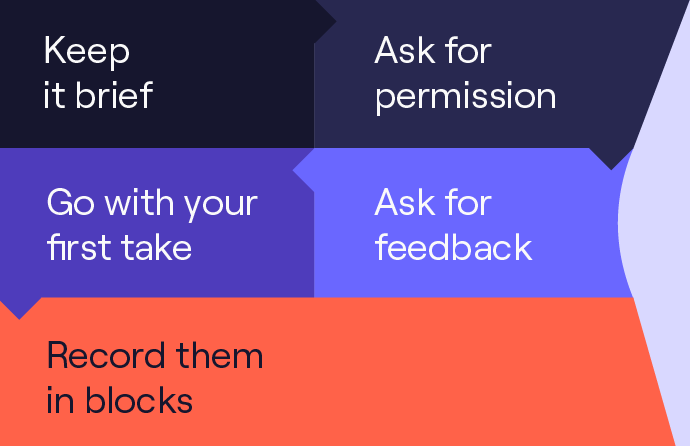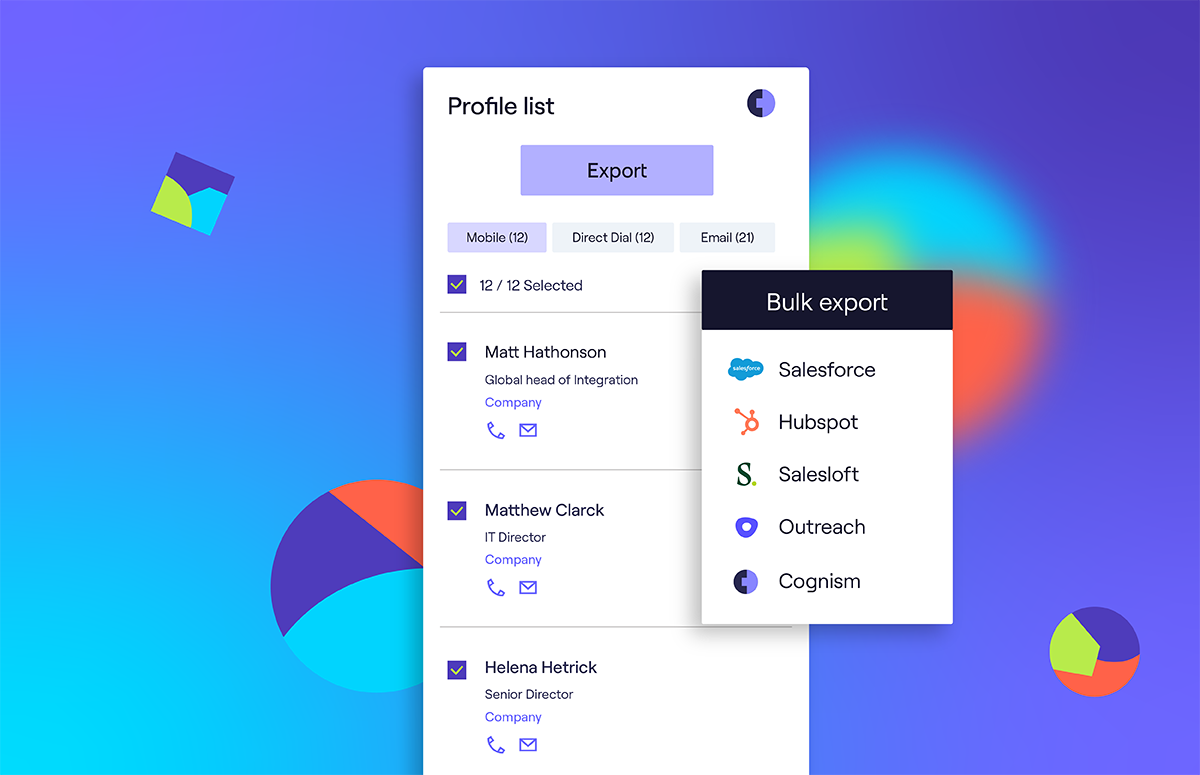How to Deal With Competitors in Business: 7 Top Strategies
These are the worst things you could do when you’re dealing with competitors 👇
- Be aggressive.
- Say, “My horse is bigger than your horse and that’s why we’re going to win!”
- Let your prospect know why you’re right and your competitor is wrong.
But if you can’t directly criticise them…
How should you approach talking about competitors with your prospects?
We weren’t too sure ourselves - so we spoke to:
- Brahm Jagpal, Senior Commercial Sales Manager at Cognism.
- Charlie Beale, Senior Enterprise Account Executive at Cognism.
- Sophie Pease, Enterprise Account Executive at Cognism.
Let’s unpack the details 👇
Four top SaaS salespeople discuss how to deal with competitors when closing deals. Press ▶️ to watch our video.
1. Identify the incumbent provider
When it comes to understanding how to deal with competitors in business, the first step is to identify the incumbent provider.
The term “incumbent provider” describes a company that currently provides services to another company for an agreed duration.
Knowing who they are and how your approach differs allows you to find an edge over them.
Sophie explained:
“Without knowing the competitor they have in place, you’re never going to know what the gap is or what their problem is that you can potentially solve.”
2. Understand your competitors’ tools
This may seem obvious, but to deal with your competitors in business effectively, you need to know the ins and outs of their tools.
Charlie breaks this down:
“Spend time trialling and even using your competitors’ products. This builds credibility with prospects and allows you, as the salesperson, to ask leading questions about where you might be stronger than competitors.”
By deeply understanding your competitors’ offerings, you can better differentiate your own solution.
It also allows you to position your solution effectively and provide valuable insights.
According to Charlie:
“If you know these kinds of minute details, you sound credible; buyers will trust your judgment throughout the evaluation much more.”
Is there anything you should avoid doing?
Don’t slam your competitors! Charlie always maintains a positive and professional approach when discussing them.
He said:
“Even if you think they’re rubbish, if you criticise them, you’re indirectly saying to your prospect, ‘Why did you make a bad decision?’ So never talk badly about a competitor.”
Charlie recommended using an “out of 10” framing question to understand the prospect’s perspective.
He walked us through an example:
“Say they have ZoomInfo, ask ‘out of 10, how happy are you with ZoomInfo?’ Then follow up with ‘What would make it a 10?’. These questions identify what they like, where it could be improved, and potential objections.”
3. Gauge the prospect’s buying journey
Timing matters! You should customise your approach to dealing with your competitors in business based on the prospect’s position in the buying journey.
Brahm explained:
“You need to gauge where the prospect is in their buying journey. Understanding this is always useful, even if they are evaluating several providers. Are they in early-stage research? Have they had an initial demonstration? Are they trialling products, or are they late-stage?”
Knowing where the prospect is in the buying journey allows you to provide the right information at the right time, effectively countering your competitors. It helps to shape your entire sales demo.
However, Sophie cautioned:
“You need to know how long they’re in contract for or when they’re coming up for tender. It might not even be worth your time and your effort.”
“You can be too early; you want to be talking to them soon before the renewal. You could be focusing on business that will come in sooner than that.”
4. Evaluate your solution’s role
When learning how to deal with competitors in business, don’t forget to evaluate whether your solution will supplement or replace the prospect’s current setup.
If your solution is supplementary, then all you need to show is how you will plug the missing gap identified in the discovery call.
Sophie advised:
“If they categorically won’t look at another vendor alongside their current solution, it’s essential not to waste time.”
Understanding how your offering fits (or doesn’t fit) into their existing infrastructure helps you focus on prospects who are more likely to convert.
Remember, as a salesperson, time is your most precious asset!
A replacement is a different scenario from a supplementary solution; you need more detail. Sophie recommends that you highlight the key differentiating points, especially when:
- Linking back to the prospect’s pain.
- Discussing their reasons for joining you on a call.
5. Showcase key differentiating points
Effectively dealing with your competitors in business requires highlighting the factors that set you apart from the pack.
What’s the best way to do this?
Sophie explained:
“You need to understand what the prospect wants and emphasise the specific points that differentiate you from their existing vendor.”
Armed with this information, you can tailor your sales pitch.
But that’s not all - you can steer the conversation and propose tangible proofs-of-concept that point to your strengths. This solidifies a compelling case!
Charlie added:
“You want to frame that conversation in a way that will always benefit your solution. You don’t want them to propose a follow-up that will favour one of your competitors.”
6. Ask for the prospect’s opinion
Hold up - don’t leave this until the end of the call!
Sophie explained why:
“If you ask for the prospect’s opinion at the very last second, it creates an environment where they can give you lots of objections, and you don’t even have time to objection handle within that call.”
So what’s the alternative?
Sophie said:
“You need to ask what they’re thinking throughout the call. Create an open dialogue and listen carefully to their responses.”
This approach allows for real-time objection handling, personalisation, and ultimately greater odds of success.
7. Provide supporting material
Finally, always offer supporting material. Real-life examples are your friend when dealing with competitors in business.
Why?
They provide tangible evidence of your benefits, bolstering your credibility. This positions you as a trustworthy option.
Here are some examples of excellent supporting material:
- Comparison documents.
- Case studies.
- G2 or Trustpilot reviews.
Should you bombard prospects with supporting material in a non-specific manner?
Absolutely not! There’s nuance to this stage of the sales process.
Let’s take a closer look 👇
Comparison documents
Sophie doesn’t think comparison documents are particularly helpful in the enterprise space.
So why bother?
Sophie explained:
“Comparison documents are really good if you’re trying to sell to smaller businesses, but in the enterprise space, anything that’s blanket and tries to put you in a box is probably not going to be good enough for you.”
Case studies
When sharing case studies, Sophie focuses on the aspects that align with prospects’ specific requirements.
She told us:
“Case studies are great, but you need to highlight the most relevant part of the case study because otherwise, no one’s going to read it.”
G2 or Trustpilot reviews
When it comes to reviews, it pays to be cautious. Thoughtful curation is key!
Sophie warned:
“I think some reviews can be misleading because all it takes is one phrase that appears to slightly contradict what you’re saying - then it can almost break down trust.”


%20Campaigns%20-%20FR%20copy%202.png)